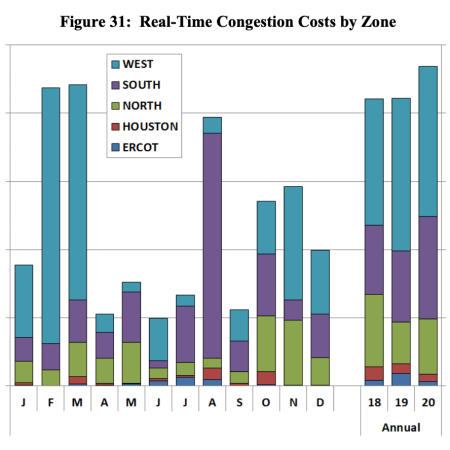Our report Transmission Congestion Costs in the U.S. RTOs relies on congestion rents because that metric is reported by Regional Transmission Organization market monitors, and we believe it is a good approximation of societal congestion costs because the short-term marginal prices reflected in congestion rents should roughly approximate societal costs over the long term. Calculating the actual societal congestion costs requires production cost modeling of a counterfactual scenario in which transmission congestion is eliminated. Production cost modeling not only introduces significant cost and complexity, but also significant inaccuracy because key inputs – like every generator’s fuel price on an hourly basis – are not publicly known. However, those inputs are accurately and fully reflected in the market prices that drive the congestion rents reported by market monitors, making the congestion rent data a valuable indicator of congestion costs. Production cost modeling also does not reflect how transmission expansion facilitates the addition of lower-cost generation.
Analysts evaluating congestion costs must make do with the data that is available to approximate actual costs that are not perfectly knowable because they reflect a counterfactual market outcome that depends on inputs that are not publicly reported.
Though the precise cost to customers is not perfectly reflected in the congestion rents reported by the ISO/RTOs, that transmission congestion imposes a significant cost on consumers and society, which is the point of our report. When transmission congestion prevents the delivery of low-cost generation, higher-cost generation sources closer to consumers must be used instead. These costs are particularly high when renewable resources with zero marginal cost cannot be fully utilized because of transmission congestion, requiring much more costly fueled resources to be used instead. Production cost studies support our findings that the higher cost of operating generators closer to load imposes a large societal cost that is ultimately paid by consumers.
